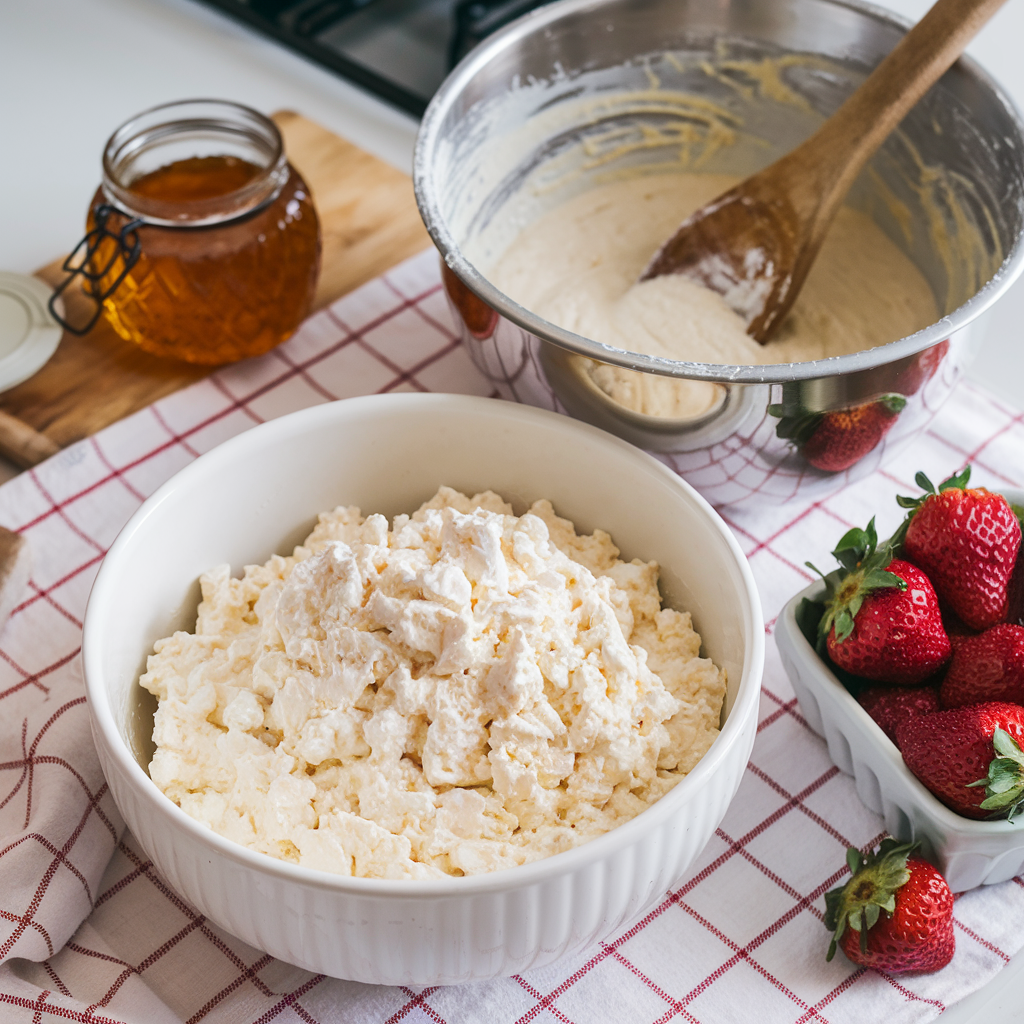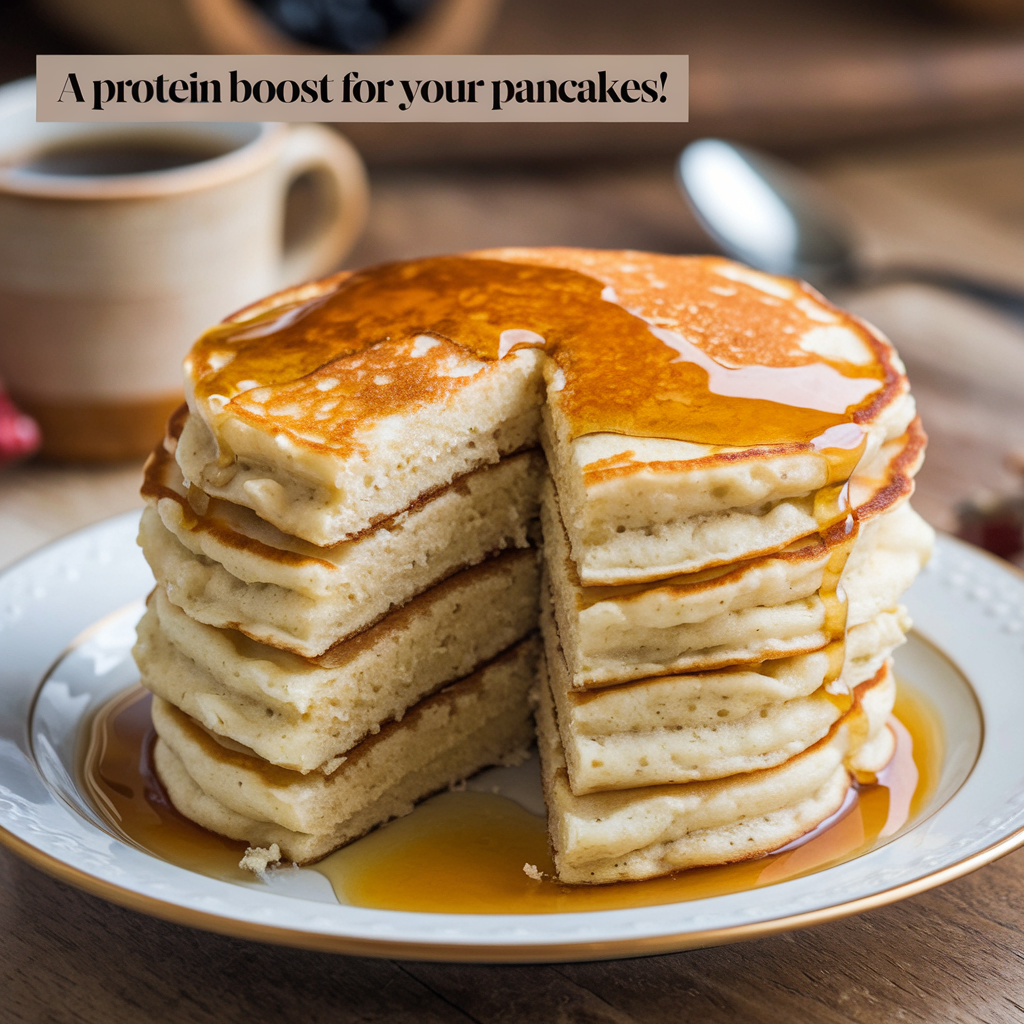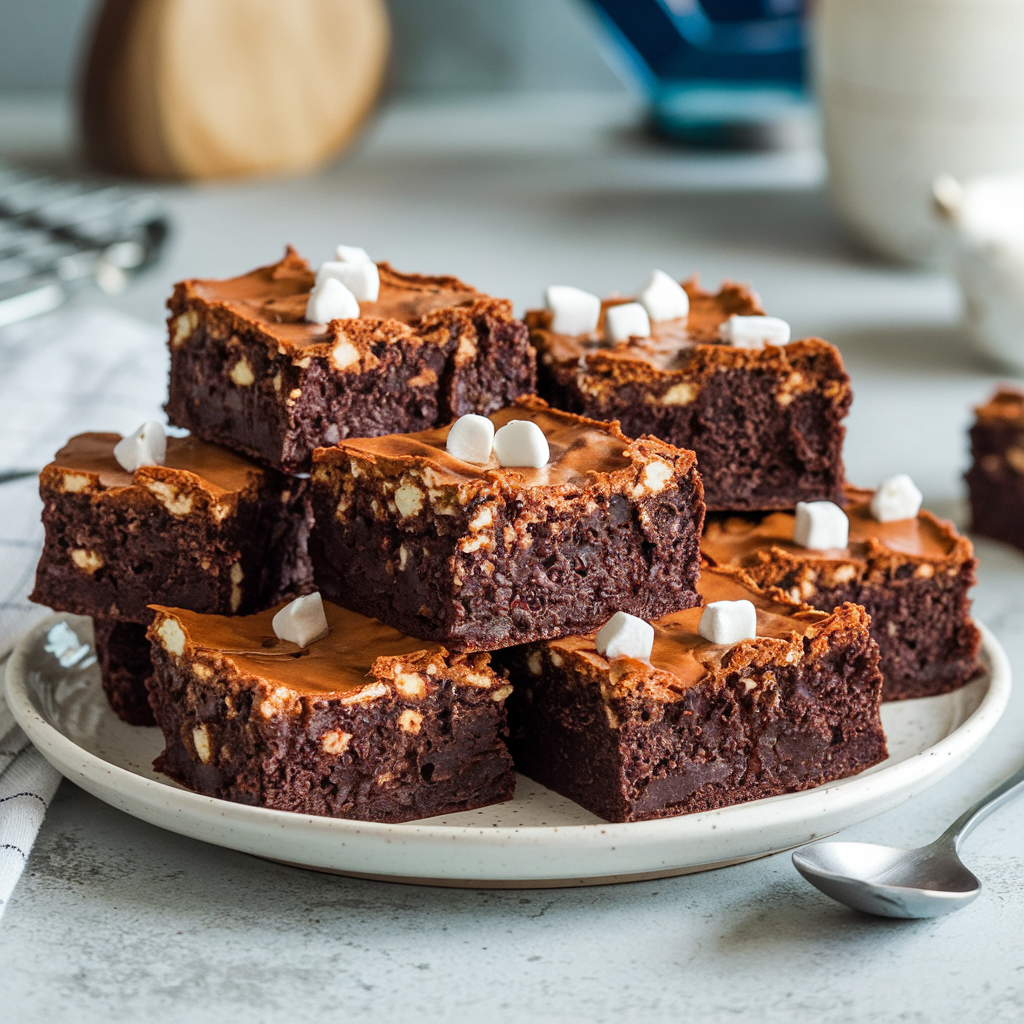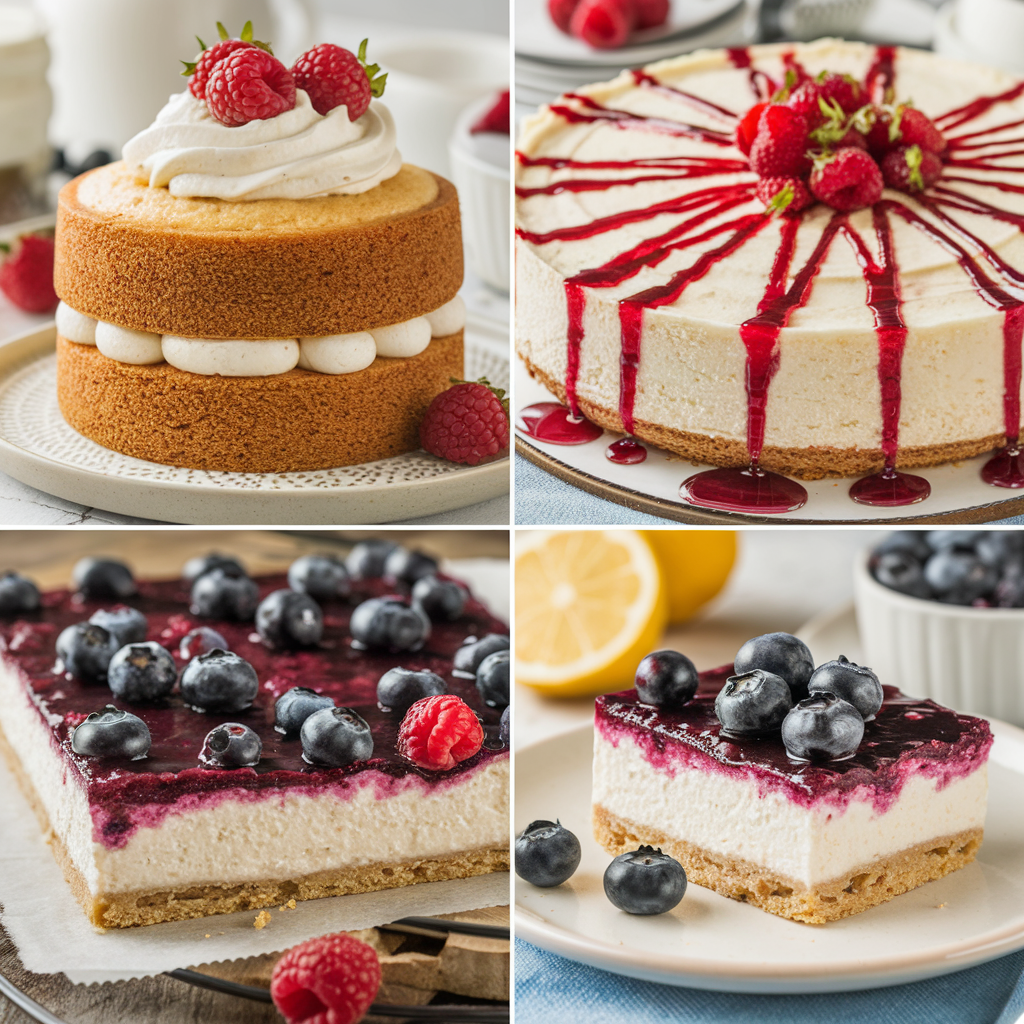Table of contents
Introduction
Cottage cheese is a versatile ingredient that can be used in a variety of dishes, both savory and sweet. But did you know it also plays a significant role in baking? Incorporating cottage cheese into your baking recipes can enhance the texture, moisture, and nutritional content of your baked goods.
Whether you’re looking to make your treats healthier or add a unique twist to traditional recipes, cottage cheese can be a valuable addition. In this article, we will explore the various ways cottage cheese can improve your baking and provide tips on how to use it effectively.
The Role of Cottage Cheese in Baking
Adding Moisture
Cottage cheese is an excellent way to add moisture to your baked goods. Its high water content helps keep cakes, muffins, and other baked items soft and tender.

Unlike some ingredients that can dry out during baking, cottage cheese maintains its moisture, resulting in a more enjoyable texture. For instance, adding cottage cheese to a cake batter can prevent it from becoming too dry, ensuring a moist and fluffy result.
Enhancing Texture

The creamy consistency of cottage cheese contributes to a smoother and richer texture in baked goods. When mixed into batters or doughs, it helps create a tender crumb and a more even texture.
This is particularly beneficial in recipes like pancakes, breads, and pastries, where a delicate texture is desired. The small curds in cottage cheese also add a unique dimension to the mouthfeel of your baked creations.
Boosting Protein Content

Cottage cheese is a great source of protein, which can be a significant advantage in baking. By incorporating cottage cheese into your recipes, you can increase the protein content of your baked goods, making them more nutritious.
This is especially beneficial for those looking to add more protein to their diet without compromising on taste. Protein-rich baked goods can help keep you fuller for longer and provide a steady source of energy throughout the day.
Benefits of Using Cottage Cheese in Baking
Low-Fat Alternative

One of the significant benefits of using cottage cheese in baking is its ability to serve as a low-fat alternative to other dairy products. For example, you can replace full-fat cream cheese or heavy cream with cottage cheese to reduce the overall fat content of your recipes.
This substitution can help you create healthier versions of your favorite baked goods without sacrificing taste or texture. Additionally, cottage cheese is lower in calories, making it an excellent option for those looking to maintain a balanced diet.
Flavor Enhancements
Cottage cheese adds a subtle tangy flavor to baked items, which can enhance the overall taste. This mild tang balances well with the sweetness in baked goods, creating a more complex and enjoyable flavor profile.
Whether you’re making breads, cakes, or pastries, the addition of cottage cheese can elevate the taste of your baked creations, making them more interesting and delicious.
Versatility in Recipes
Cottage cheese is incredibly versatile and can be incorporated into a wide range of baked goods. From breads and muffins to pancakes and pastries, there are countless ways to use cottage cheese in baking. It can be mixed into batters, used as a filling, or even blended into frosting.
This versatility allows you to experiment with different recipes and discover new ways to enjoy the benefits of cottage cheese in your baking.
Tips for Baking with Cottage Cheese
Choosing the Right Cottage Cheese
Selecting the appropriate type of cottage cheese is crucial for achieving the best results in your baked goods. Here are some tips:
- Full-Fat vs. Low-Fat: Full-fat cottage cheese tends to add more richness and moisture to baked goods, while low-fat options can be used for a lighter texture. Choose based on your recipe’s needs and your dietary preferences.
- Small Curd vs. Large Curd: Small curd cottage cheese blends more smoothly into batters and doughs, making it ideal for recipes where a uniform texture is desired. Large curd cottage cheese, on the other hand, can add a bit of texture and visual interest to your baked goods.
- Draining Excess Liquid: Some recipes may require you to drain the excess liquid from cottage cheese to avoid making the batter too runny. Use a fine mesh strainer or cheesecloth to remove the liquid as needed.
Incorporation Techniques
How you incorporate cottage cheese into your baking recipes can significantly impact the final product. Here are some techniques:
- Blending for Smoothness: For recipes requiring a smooth texture, consider blending cottage cheese in a food processor or blender before adding it to the batter. This ensures an even distribution and a creamy consistency.
- Folding Gently: When mixing cottage cheese into batters, it’s essential to fold it gently to avoid overmixing. Overmixing can lead to dense and tough baked goods. Use a spatula to gently fold the cottage cheese into the mixture until just combined.
- Combining with Wet Ingredients: Mix cottage cheese with other wet ingredients first before incorporating it into dry ingredients. This helps ensure an even distribution and prevents clumps.
Balancing Ingredients
To achieve the best results when baking with cottage cheese, consider the balance of other ingredients in your recipe:
- Adjusting Moisture Levels: Since cottage cheese adds moisture, you may need to adjust the quantities of other liquid ingredients in your recipe. Reduce the amount of milk, water, or other liquids slightly to maintain the right consistency.
- Enhancing Flavor: Cottage cheese has a mild flavor, so you may need to adjust other flavorings in your recipe. Consider adding a bit more vanilla extract, spices, or sweeteners to balance the flavors.
- Complementing Textures: The texture of cottage cheese can complement various baked goods. For example, pairing it with crunchy toppings like nuts or granola can create a delightful contrast.
Common Mistakes to Avoid When Baking with Cottage Cheese
Overmixing the Batter
One of the most common mistakes when baking with cottage cheese is overmixing the batter. Overmixing can break down the curds in cottage cheese and overdevelop the gluten in your flour, leading to dense and tough baked goods.
To avoid this, gently fold the cottage cheese into your batter until just combined. This technique helps maintain the desired texture and ensures your baked items remain light and tender.
Not Draining Excess Liquid
Cottage cheese contains a fair amount of liquid, which can sometimes make your batter too runny if not properly drained. Failing to remove this excess liquid can result in baked goods that are soggy or don’t rise correctly.
To prevent this, use a fine mesh strainer or cheesecloth to drain the cottage cheese before adding it to your recipe. This step ensures your batter maintains the right consistency for optimal baking results.
Using the Wrong Type of Cottage Cheese
Choosing the right type of cottage cheese is crucial for the success of your baked goods. Different types of cottage cheese, such as full-fat, low-fat, small curd, or large curd, can affect the texture and moisture content of your final product.
For smoother batters and a more uniform texture, small curd cottage cheese is often preferred. For richer and more moist baked goods, full-fat cottage cheese can be the better choice. Always consider the specific requirements of your recipe when selecting cottage cheese.
Conclusion
Incorporating cottage cheese into your baking can significantly enhance your baked goods’ moisture, texture, and nutritional content. As a low-fat alternative, cottage cheese helps reduce the overall fat content of your recipes without compromising on flavor.
Its subtle tangy taste adds a delightful complexity to sweet and savory baked items alike, while its high protein content makes your treats more nutritious.
Whether you’re looking to keep your cakes moist, add a tender crumb to your pastries, or boost the protein in your muffins, cottage cheese is a versatile and valuable ingredient in the kitchen.
By following the tips and avoiding common mistakes discussed in this article, you can successfully incorporate cottage cheese into your baking and enjoy the benefits it offers.
Experiment with different types and techniques to find what works best for your favorite recipes. Don’t be afraid to get creative and discover new ways to use cottage cheese in baking. Share your experiences and recipes with others to inspire more delicious and healthy baking adventures!
Thank you for exploring the world of cottage cheese in baking with me. Happy baking! 😊
Frequently Asked Questions (FAQs)
Can I substitute cottage cheese for other dairy products in baking?
Explanation: Yes, cottage cheese can often be used as a substitute for other dairy products in baking. For example, it can replace ricotta cheese in recipes like lasagna or stuffed shells. It can also be used in place of sour cream or yogurt in cakes and muffins to add moisture and protein. When substituting, keep in mind that cottage cheese has a slightly different texture and flavor, so you may need to blend it until smooth for a more even consistency.
Examples of Substitutions for Common Dairy Products:
- Ricotta Cheese: Use cottage cheese in equal amounts as a substitute for ricotta in savory and sweet recipes.
- Sour Cream: Replace sour cream with blended cottage cheese in cakes and quick breads.
- Yogurt: Substitute yogurt with cottage cheese to add creaminess and protein to your baked goods.
Does cottage cheese affect the baking time?
Discussion: Cottage cheese can slightly affect baking time due to its moisture content. Recipes that include cottage cheese may require a bit longer baking time to ensure that the moisture is fully absorbed and the baked goods are properly set. It’s essential to check for doneness by using a toothpick or cake tester inserted into the center of the baked item. If it comes out clean or with a few moist crumbs, the baking is complete.
Tips for Ensuring Even Baking:
- Monitor Closely: Keep an eye on your baked goods as they cook, and use visual and physical cues to determine doneness.
- Adjust Baking Temperature: If necessary, lower the baking temperature slightly and extend the baking time to ensure even cooking without over-browning the top.
Are there any recipes that specifically require cottage cheese?
Examples of Popular Recipes:
- Cottage Cheese Pancakes: These pancakes are known for their fluffy texture and added protein content, making them a great breakfast option.
- Cheesecake: Some cheesecake recipes use cottage cheese for a lighter, creamier texture.
- Cottage Cheese Bread: This bread incorporates cottage cheese for extra moisture and a tender crumb.
- Blintzes: Cottage cheese is often used as a filling for these sweet, crepe-like pastries.
Unique Characteristics That Cottage Cheese Brings:
- Moisture and Tenderness: Cottage cheese helps keep baked goods moist and tender.
- Nutritional Boost: It adds protein and essential nutrients, making your baked items healthier.
- Mild Flavor: The mild flavor of cottage cheese blends well with both sweet and savory ingredients, adding subtle complexity without overpowering other flavors.

